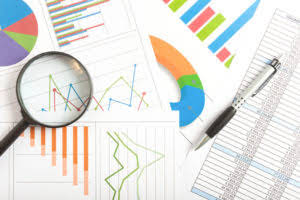
At a basic level, accounting is a “system of accounts,” each containing money. The act of “accounting” is the action of tracking how money moves between these accounts. The Chart of Accounts (COA) lists every account used within an organization’s accounting system. It contains a high-level overview of every account name and the corresponding number, type, and typically the amount of money held within each account.
Income Statement Categories
Long-term loans or leases and other long-term obligations (usually due beyond a year) are non-current liabilities. The total assets amount represents the value of all the company’s resources. You can have multiple asset accounts, each representing a different type of asset. Consider integrating it with all your sales sources and payment systems to create a single source of truth about your business finances. Book your seat at our free Weekly Webinar of try Synder for free to see how it can help you manage your business more efficiently. The general ledger is the central hub where all financial transactions are recorded.
Fuel Energy (CNG/LNG) Financial Model – Case Study
For solo practices, this can even help to show whether the firm actually is profitable after accounting for the owner’s work as an advisor. The main accounts within your COA help organize transactions into coherent groups that you can use to analyze your business’s financial position. In fact, some of the most important financial reports — the balance sheet and income statement — are generated based on data from the COA’s main accounts. The Chart of Accounts is one of those unknown parts of your accounting software we don’t even think about. In this ultimate guide, not only do we explore examples of a common chart of accounts but also we discuss best practices on how to properly set up your chart of accounts.
- Think of debts to suppliers, loans from banks, or unpaid expenses – they are your liabilities.
- You can start to understand performance metrics, set some targets, and know what you’ll need to reach your financial goals.
- There was an increase of 0.2% in real household expenditure in Quarter , following declines in the previous two quarters.
- Therefore, keeping track of billable and non-billable hours gives you a more accurate picture of business profitability.
- Correctly recorded transactions help business owners and startup founders get better understanding into their company’s performance, and makes following GAAP and accounting standards much, much easier.
Understanding the basics
An equity account is a representation of anything that remains after accounting for all operating expenses and revenue accounts. As time goes by, you may find yourself wanting to create a new line item for each transaction. However, doing so could litter your company’s chart and make it confusing to navigate. A chart of accounts, or COA, bookkeeping for consultants is a complete list of all the accounts involved in your business’s day-to-day operations. Your COA is useful to refer to when recording transactions in your general ledger. Every time you record a business transaction—a new bank loan, an invoice from one of your clients, a laptop for the office—you have to record it in the right account.

- You can have multiple liability accounts in the COA, representing different types of your obligations.
- A chart of accounts (COA) is a structured list of an organization’s financial accounts used to categorize and record financial transactions.
- Non-current assets are things a company owns but won’t convert to cash shortly, like property, equipment, and long-term investments.
- A chart of accounts should keep your business accounting error-free and straightforward.
- Managed accounting combines the best of cloud-based software, automation, and human insights into an effective, outsourced solution for your business’s financial department.
In that environment, it may not be necessary to separate costs between direct/indirect and operating, and there will be no gross margin on the financials. It is hard for me to be critical because 90% of business owners can probably relate to never having looked at their chart of accounts. Even many controllers and CFOs are weak on implementing chart of accounts best practices and structure one that easily and plainly produces the financial information management wants to see. “I don’t think I’ve ever looked at that,” he told me as we looked over his accounts. I could see the light bulbs going on as I showed him how his sales invoice lines were all configured to flow to a single sales account in his chart of accounts. With such a simplistic accounting structure, his financials were unable to provide detail about his five distinct revenue streams.
Identifying the Cost of Goods Sold related to your product is still important, such as web-hosting costs for website designers, because it helps to identify the profit margin you’re receiving on the services you’re selling. Thanks to accounting software, chances are you won’t have to create a chart of accounts from scratch. https://www.bookstime.com/ Accounting software products generally set you up with a basic chart of accounts that you can work with your accountant or bookkeeper to amend, according to your industry and your business’s complexity. As mentioned above, equity is one of the so-called balance sheet accounts, as it appears in the balance sheet.
What is the standard chart of accounts?

A COA is a list of the account names a company uses to label transactions and keep tabs on its finances. You use a COA to organize transactions into groups, which in turn helps you track money coming in and out of the company. Your accounting software should come with a standard COA, but it’s up to you and your bookkeeper or accountant to keep it organized.
Now, as the CEO of Oak Business Consultant, her leadership has driven the firm to unparalleled heights, marking it as a benchmark for excellence and innovation. Beyond her corporate achievements, Sadaf is also a revered educator, blending theoretical and practical insights to shape the future of financial analysts and consultants. With credentials like a Master’s Degree in Finance and Economics and a title of CSP, she’s a force in financial analysis, business planning, and more. Dive into Sadaf’s world and discover a blend of knowledge, expertise, and transformative leadership. Discover our comprehensive Accounts and Bookkeeping services, designed to streamline your financial management. From meticulous record-keeping to precise financial analysis, our expert team ensures your books are in impeccable order.
